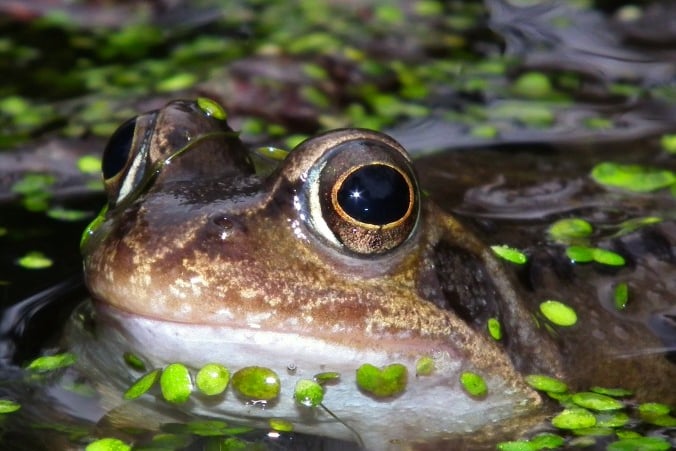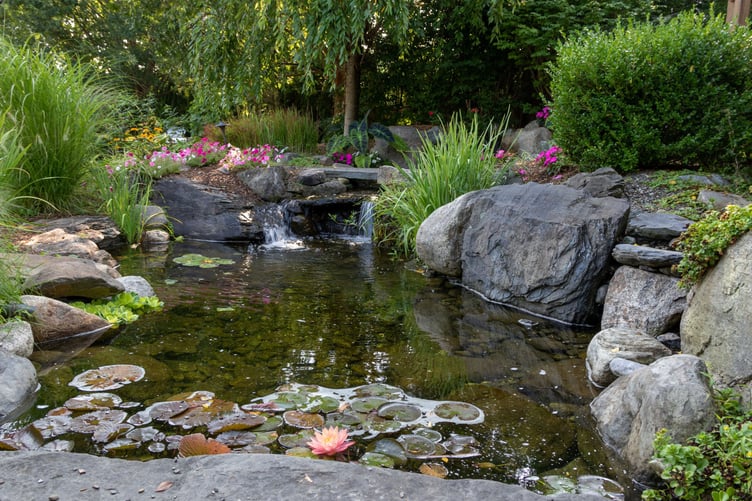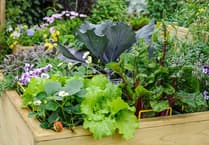HAVE you dreamed of a pond or water feature in your garden and dismissed the idea because a stretch of water surrounded by decorative foliage would be too expensive and time-consuming and generally out of your league?
If so, the good news is that it’s time you had second thoughts…
For instance, a friend has a pond little more than three feet long which cost him hardly anything, needs minimum maintenance and gives him enormous pleasure. Aquatic plants thrive and wildlife is positively queueing up to enjoy this unexpected urban haven.
Ponds are disappearing features in the countryside so stretches of water in gardens, however small, have never been so ecologically important. And never have there been so many types to choose from - prefabricated structures, flexible liners in butyl rubber or plastic and polyester laminates.
If you are thinking of putting in a pond, remember that correct positioning is vital for its long-term health. It shouldn’t be too near trees - roots can infiltrate the pond and falling leaves will rot in the water, using up oxygen at a time when plants are dormant.
For water plants to thrive, they must get at least six hours a day of exposure to any available sun and the pond should, if possible, be situated at the garden’s lowest point.
As a general rule, two feet is an ample depth for a domestic pool and any plants that enjoy shallow conditions can be positioned on shelves around the edges.
A simple formula for working out the size of the liner you need is to add twice the maximum depth to the maximum length and width of the pool. The liner is then positioned and loosely anchored around the edges.
When water is run in, the liner will be moulded into shape and the edges can be permanently secured with turf, stones, tiles or even brickwork. Allow the pond to settle for at least a week before incorporating plants. Ideally, it should be filled with rainwater.
Marginal plants should be placed on the shelving using baskets filled with aquatic compost with a low nitrogen content.
A mix of plants is required for a healthy pond - oxygenators to keep the water in good health, floating plants to provide vital shade for wildlife and plants around the edge to help the pond blend with its surroundings.
For a small pond look for oxygenators like hornwort, spiked water milfoil and water violet. Aim to cover two thirds of the pond with floating plants like water soldier or frogbit.
Marginal plants are especially important for wildlife, providing shelter above and below the waterline. Look for the pretty pink amphibious bistort, lesser spearwort and arrowhead. Other marginals suitable for small ponds include marsh marigold, lady’s smock and ragged robin.
These can be grown in baskets on the floor or shelves of the pond. Unless the baskets have a very fine mesh, line them with hessian to stop the compost floating out and top-dress with gravel.
Plants that enjoy deeper water, like waterlilies, may not be big enough to be placed straight to the bottom of your new pond so lower them in stages by resting their basket on bricks until their stems are tall enough to reach the surface.
If the pond is low during the summer it should not be refilled with tap water as this contains chlorine and will cause damage to the pond’s ecosystem. Once the pond is established it doesn’t take long for an amazing array of creatures to find their way to it.
In the first season, we counted dragonflies, damselflies, freshwater shrimps, frogs, toads, hoverflies, ladybirds, pond-skaters and water boatmen. There’s always something new to see, regardless of weather or seasons. However small your garden, water can work magic in it.

JUST THE JOB
What to do in West Somerset gardens in June
Your hard work throughout the spring should be rewarded this month with the first tender broad beans, early potatoes and sun-warmed strawberries. But although most sowing and planting should be completed there’s still plenty to do - watch out for extra-active pests and hoe regularly to thwart self-seeding weeds.
IN THE FLOWER GARDEN
Harden off and move hanging baskets from the greenhouse into their final positions.
Lift and divide clumps of snowdrops and bluebells and overcrowded clumps of flower bulbs and tubers.
Pinch out the tips of fuchsias to encourage more flowers. Pick sweet peas as soon as they bloom.
Stake tall perennial plants to prevent wind damage and train climbing plants including honeysuckle and clematis, using soft ties.

IN THE VEGETABLE GARDEN
Outdoor tomatoes can go into their permanent quarters. Plant with good compost and start foliar feeding when the first trusses begin to set
Harvest first early potatoes - they are normally ready about ten weeks after planting. Harvest salad crops and re-sow every two weeks for a constant supply.
When onion and garlic leaves start to yellow and die back, they’re ready to harvest.
Harden off and plant out tender vegetables such as courgettes, squash and sweetcorn. When planting out cabbages, use brassica collars against cabbage root fly attack. Carrots can be protected against the carrot fly with horticultural fleece.
IN THE FRUIT GARDEN
Protect developing fruit from birds with netting. Peg down strawberry plant runners to create more plants for next year.
Summer pruning of apples should begin when the new side shoots become as thick as pencils. Take them back to four or five leaves from the base. Plums, cherries and peaches can also be pruned. Cut just above an outward-facing bud.
Grape vines will also need attention. Pinch out or cut off fruiting shoots at a couple of leaves beyond the bunch. Non-fruiting shoots should be taken back to one leaf from the base.
IN THE GREENHOUSE
Open vents and doors on warm days. Check plants daily and water if dry.
Damp down on hot days to increase humidity and deter red spider mites. Look for aphids on the underside of leaves





Comments
This article has no comments yet. Be the first to leave a comment.